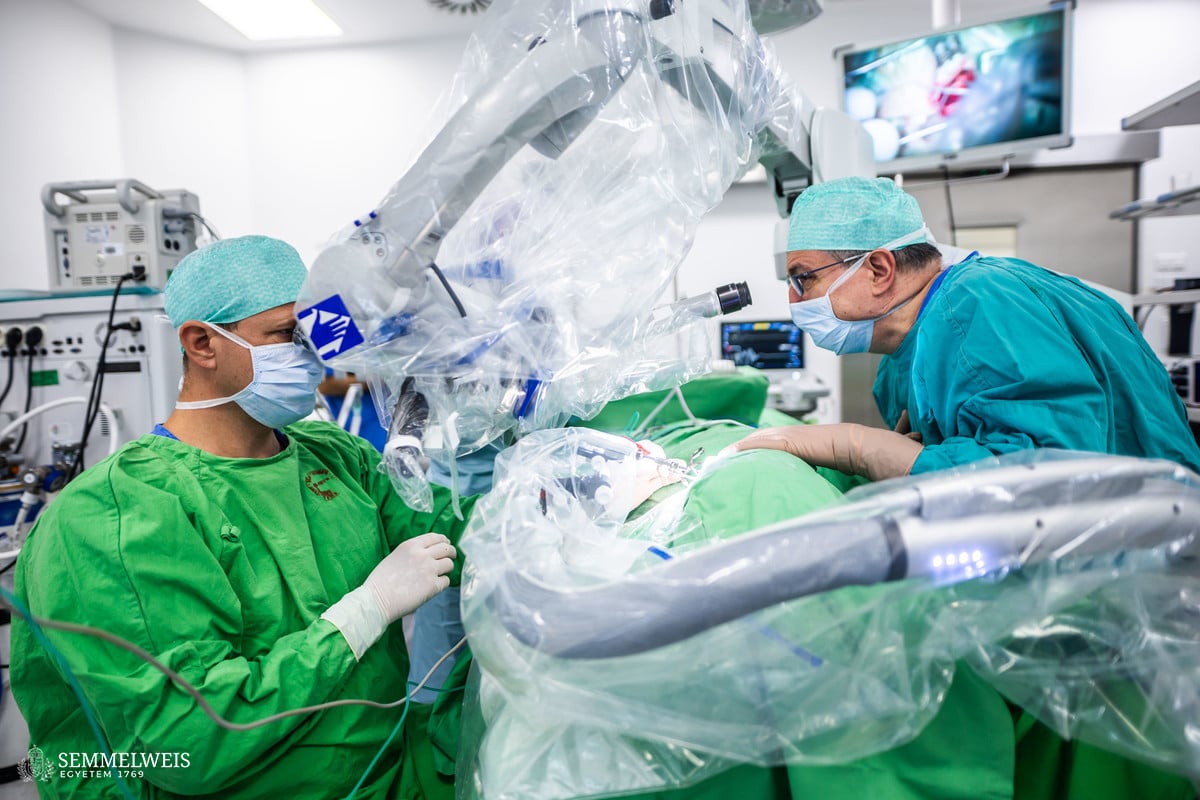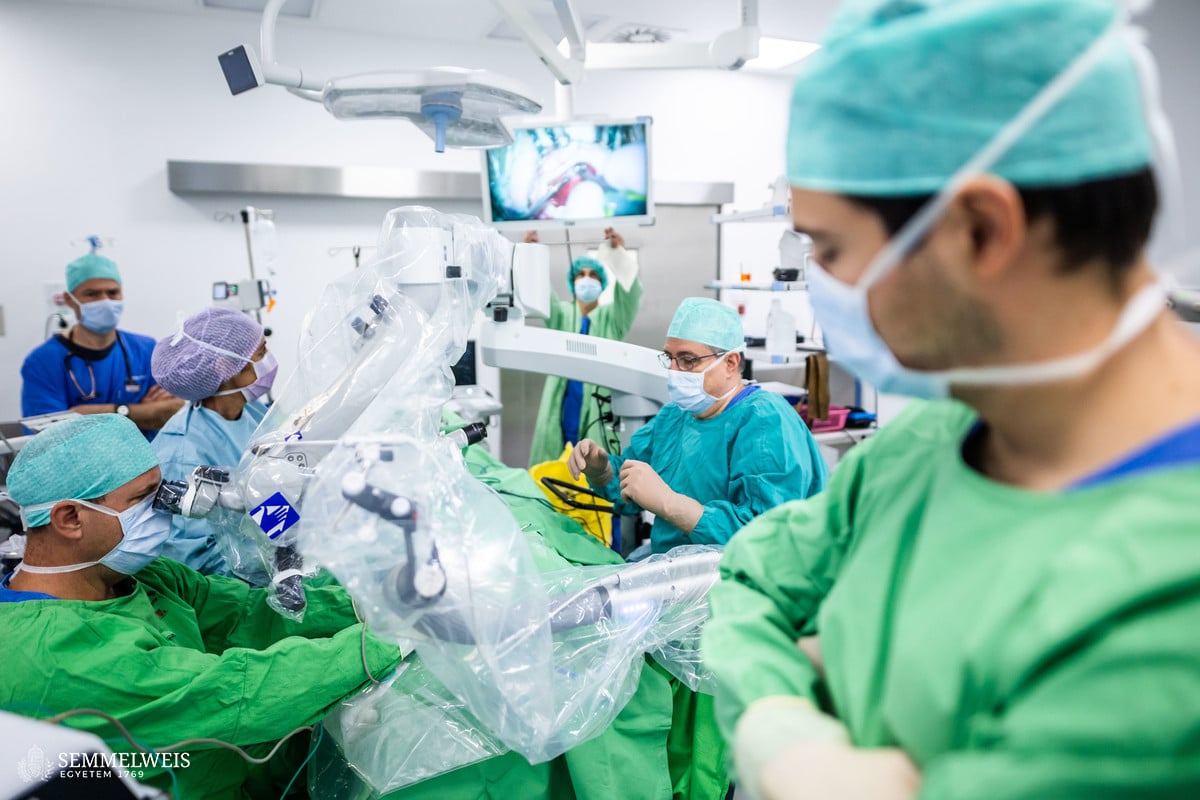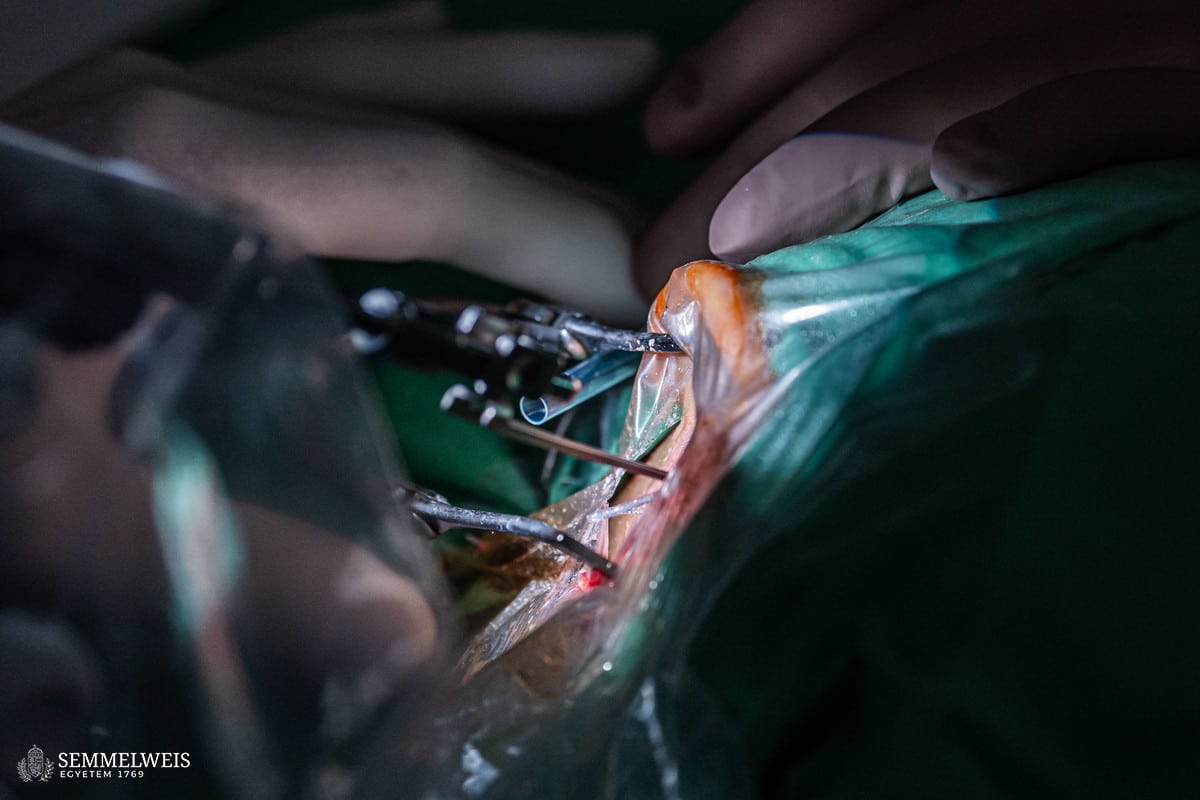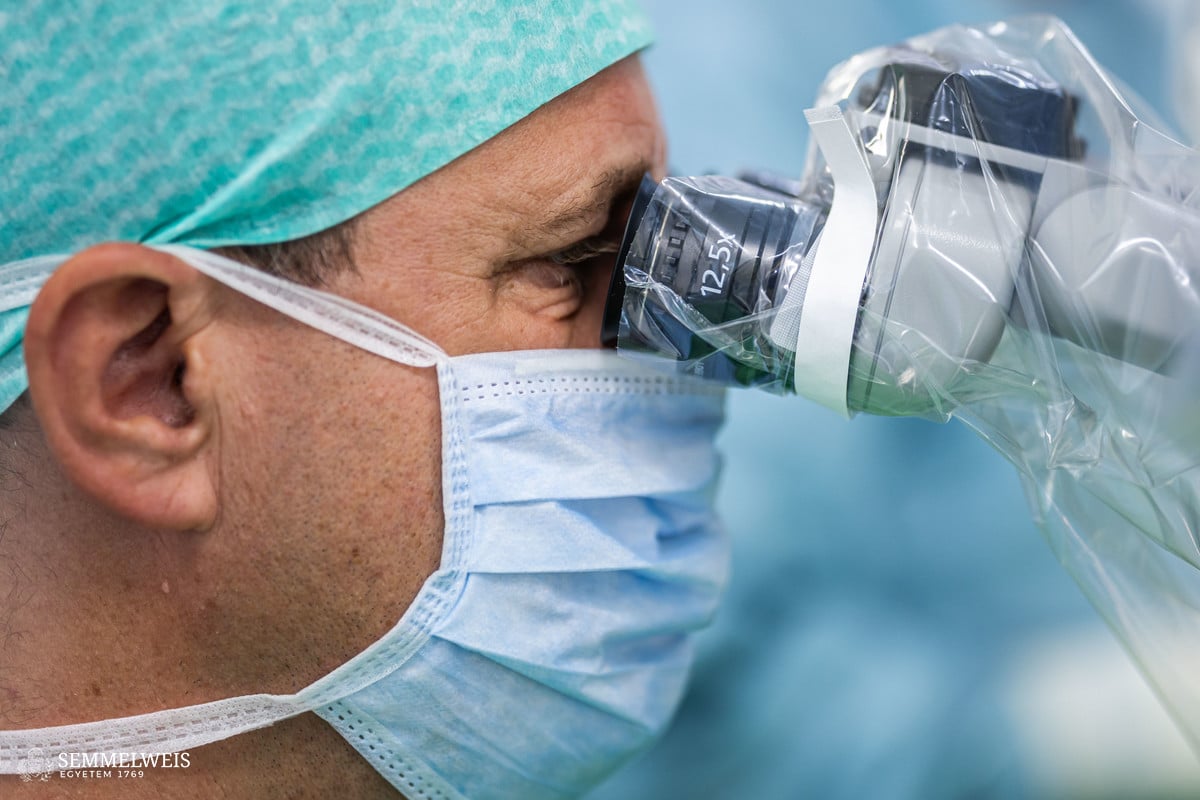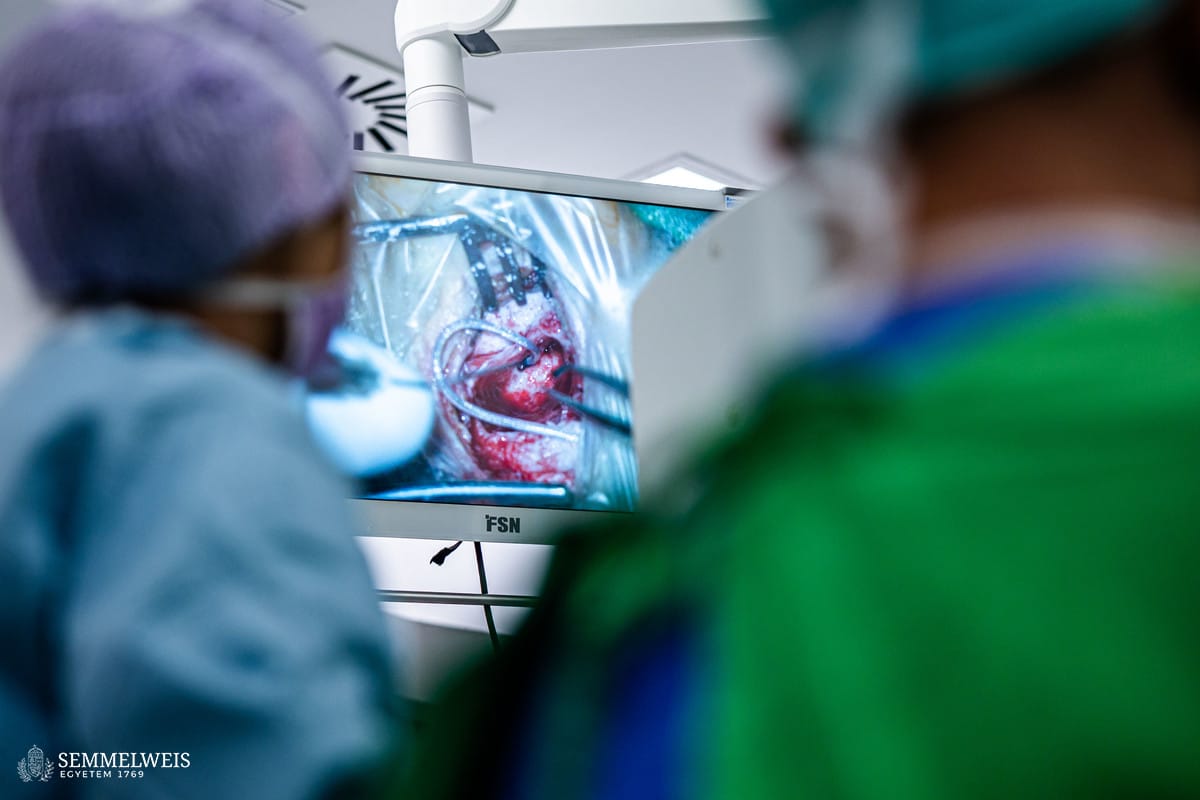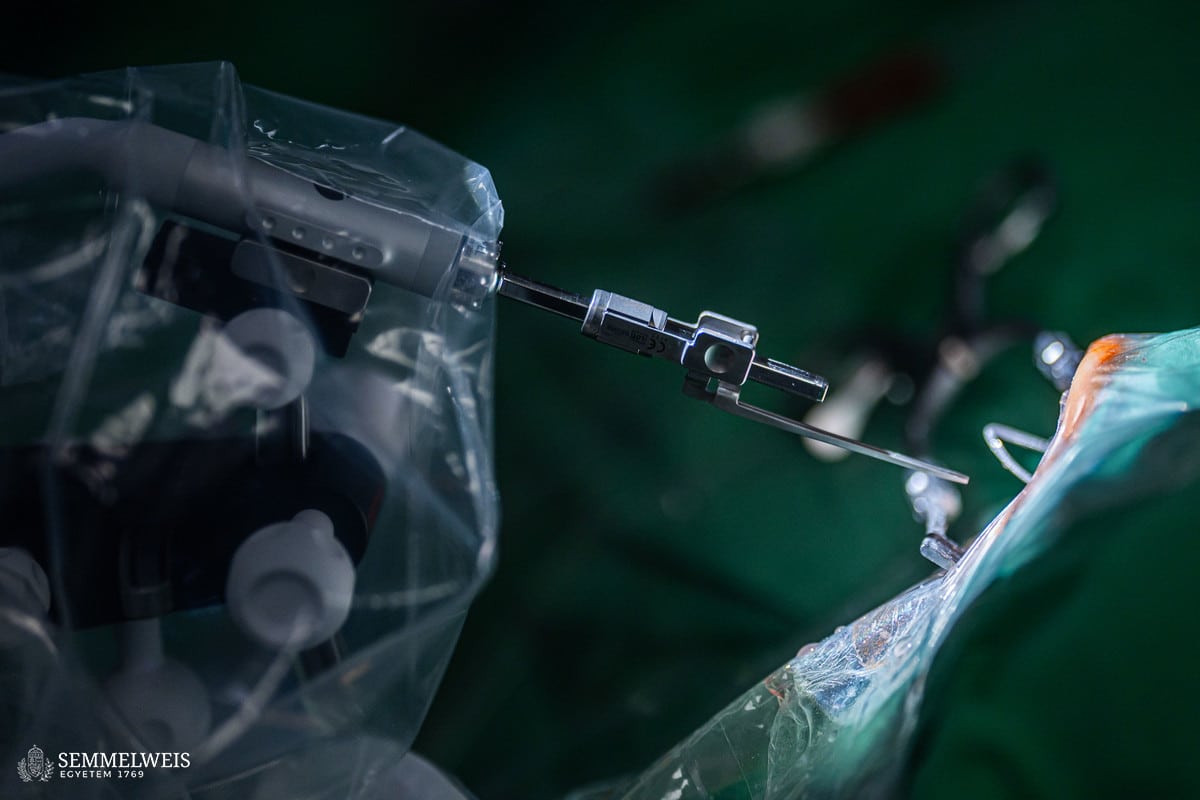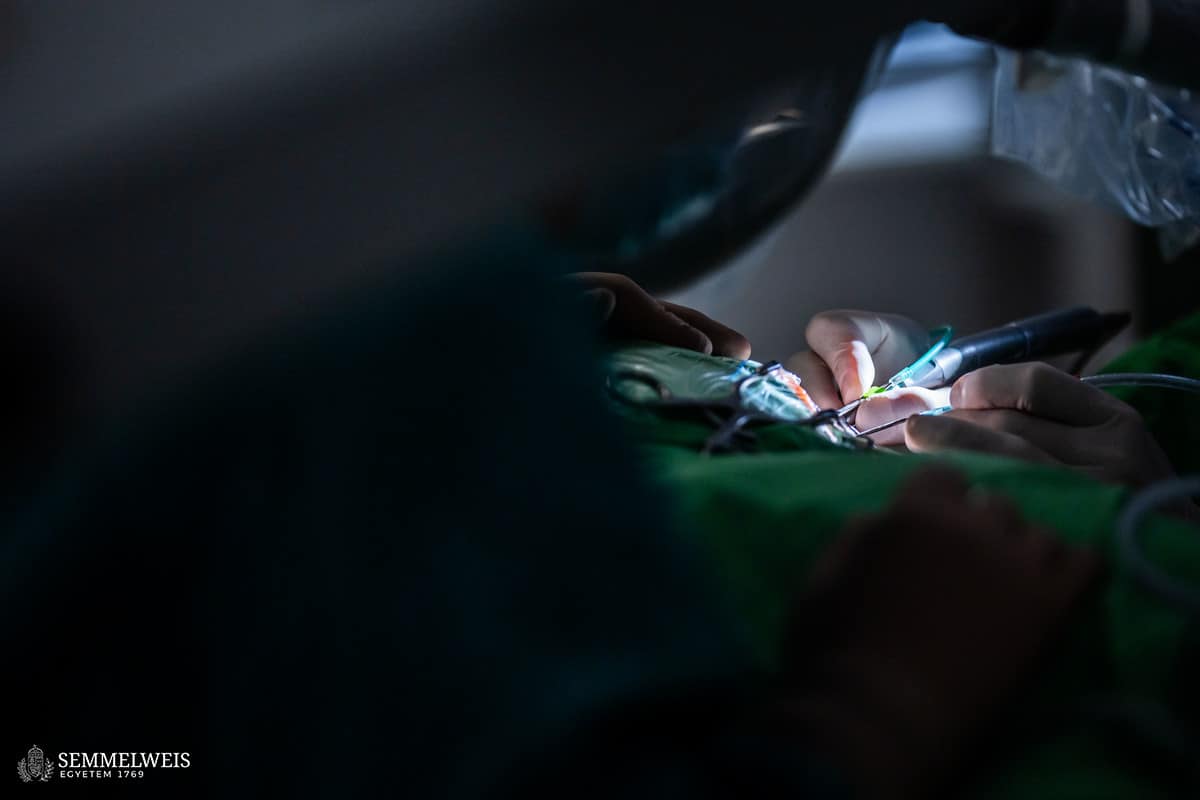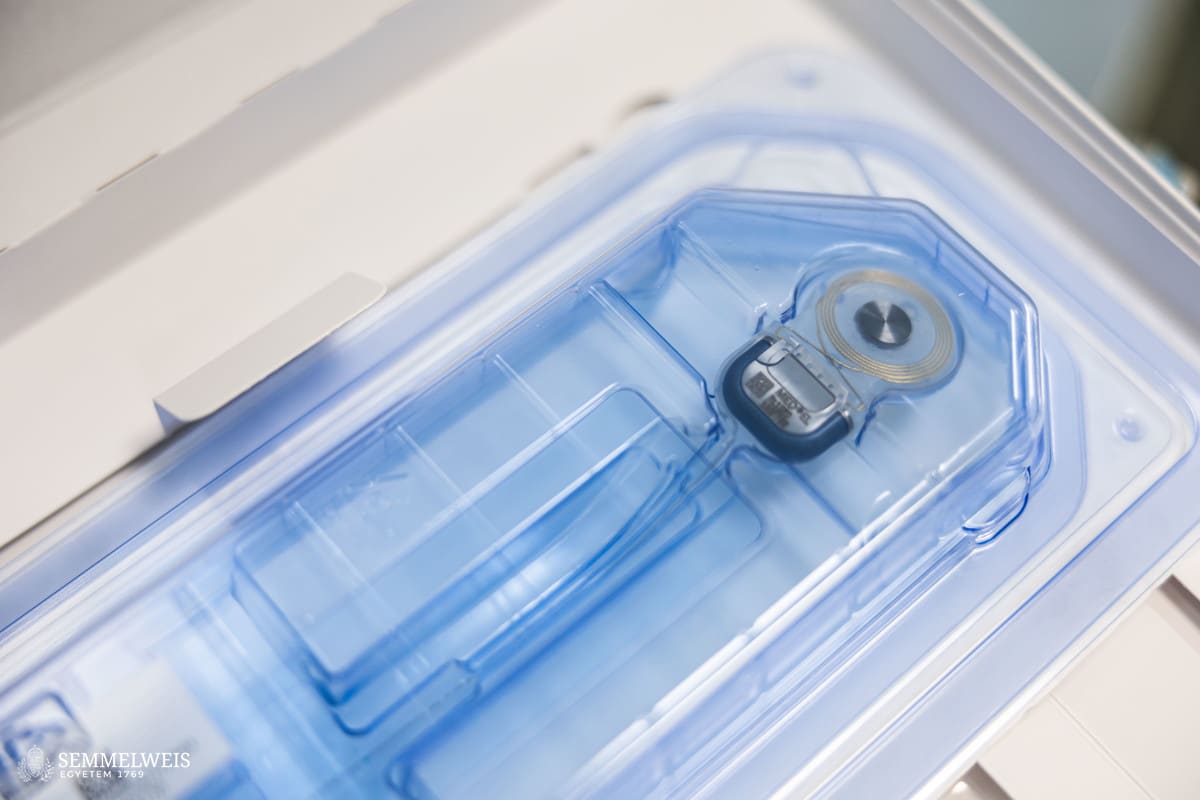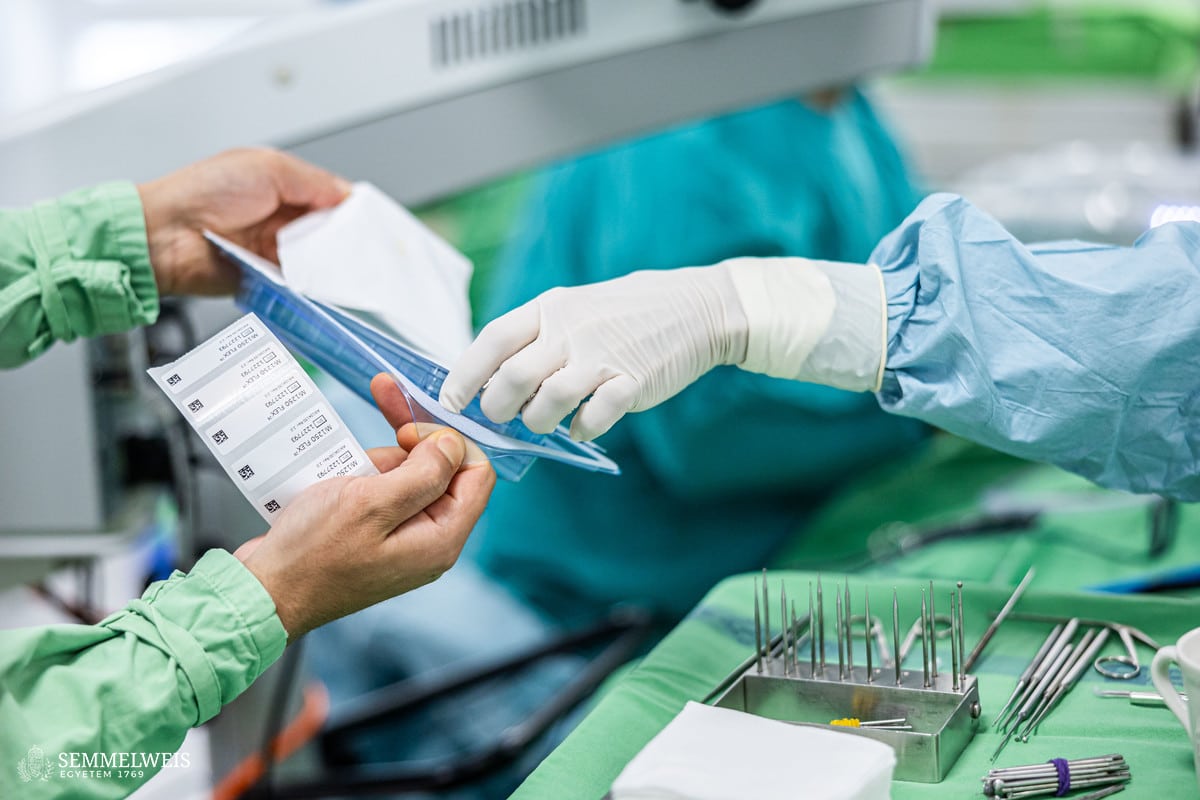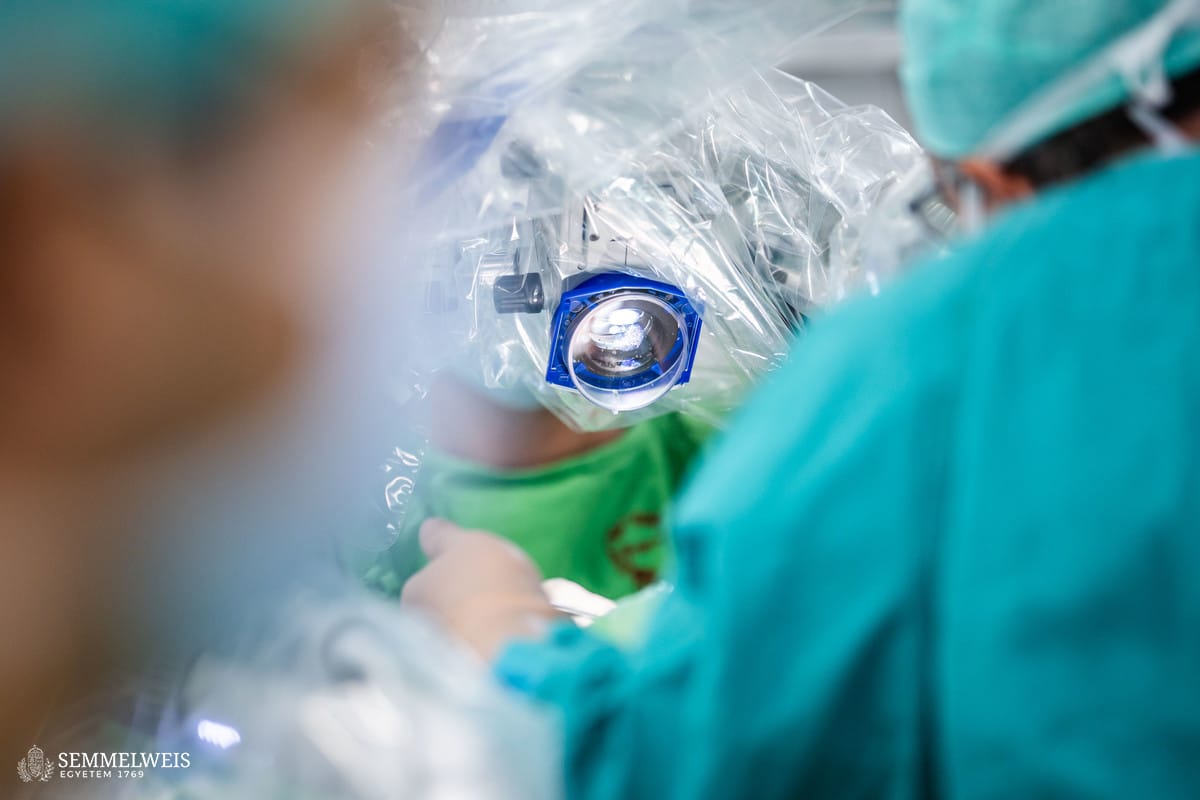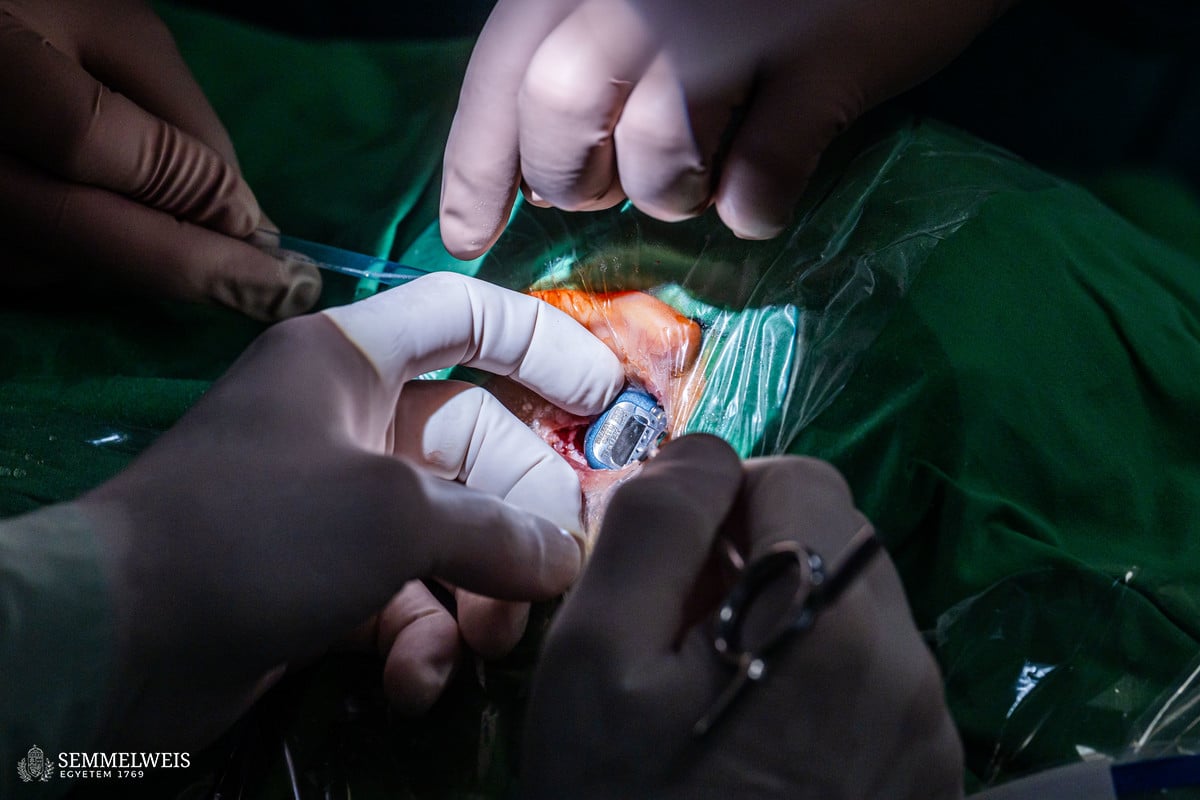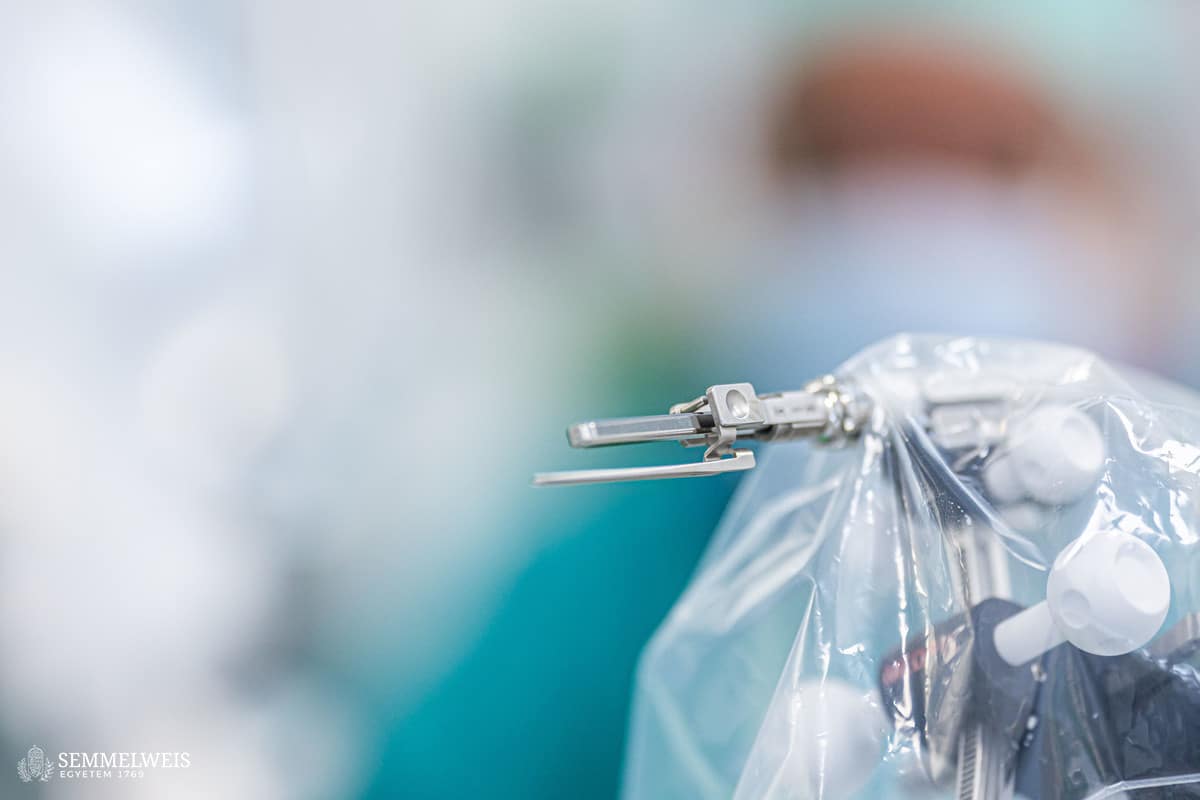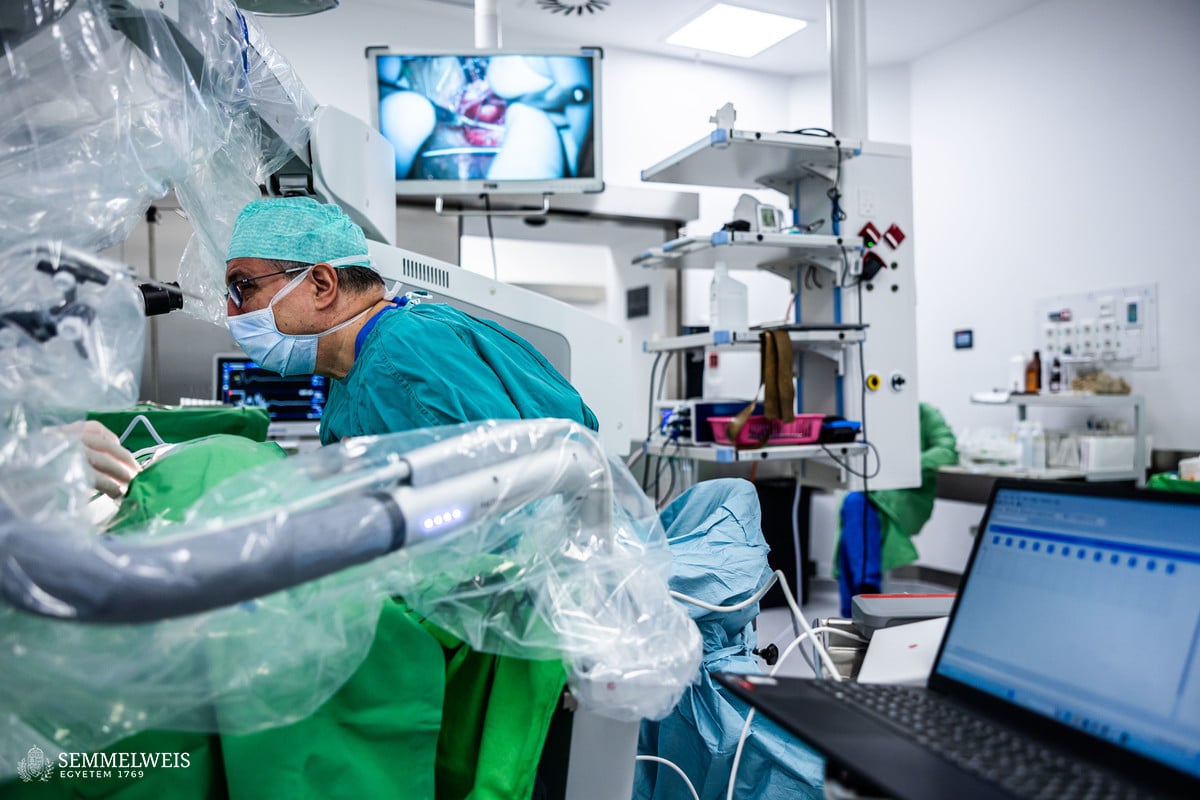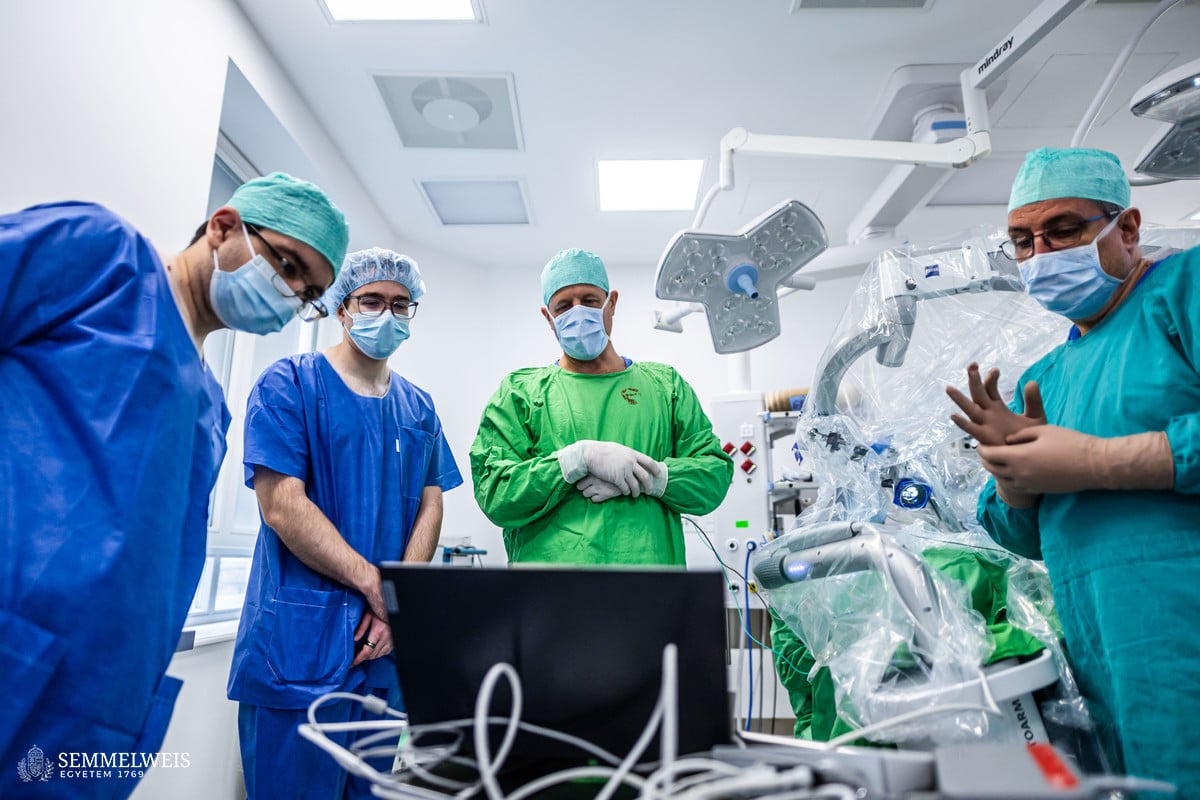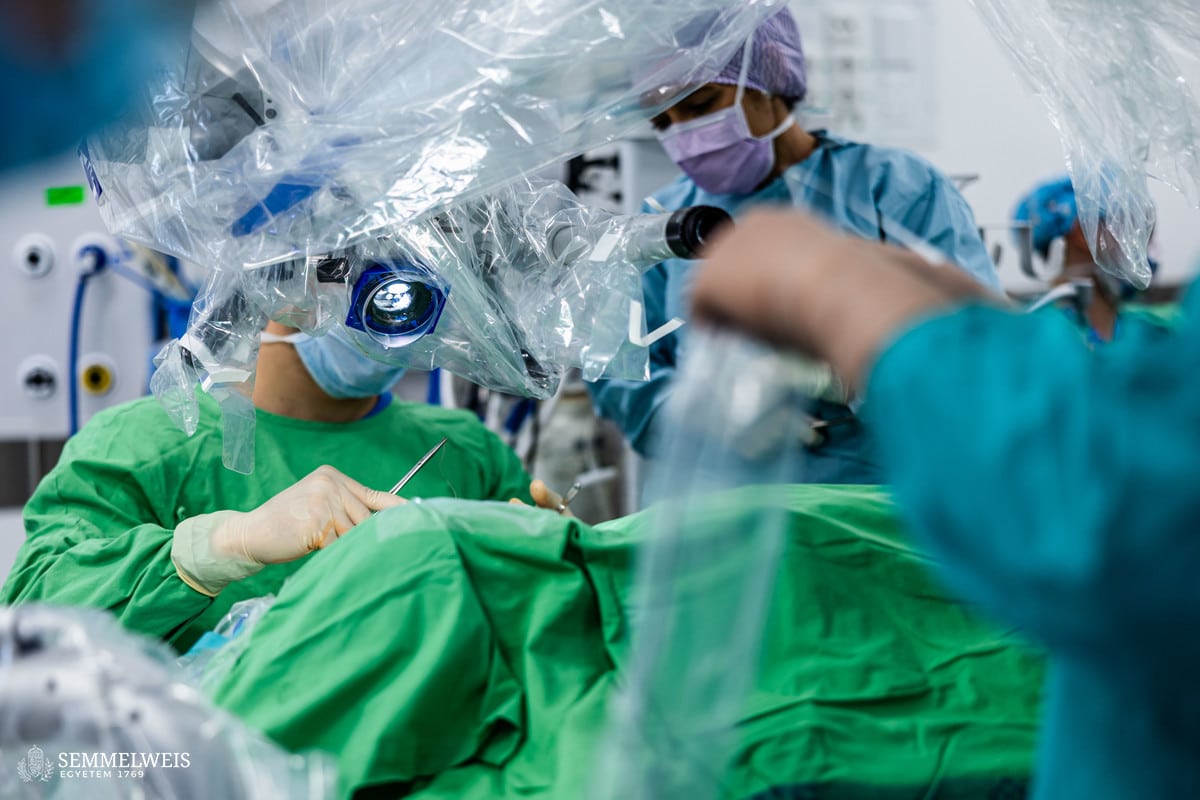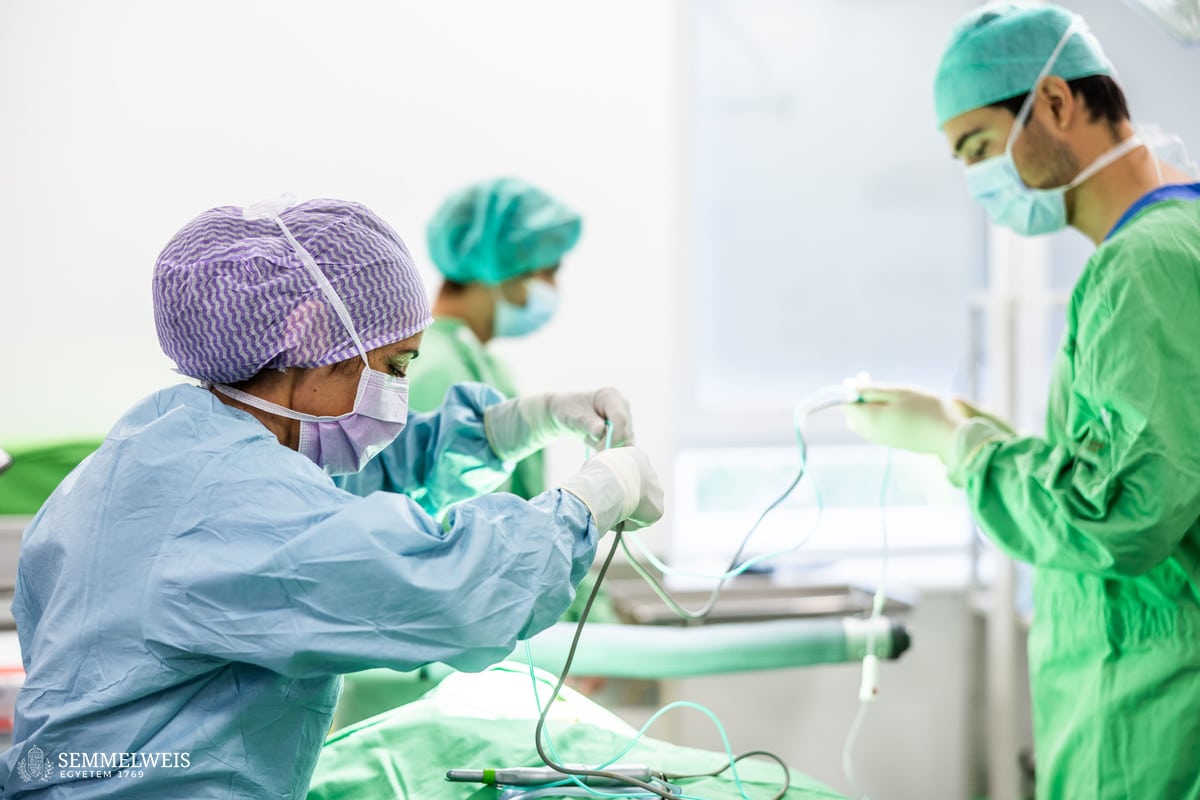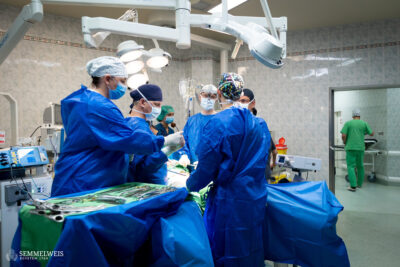 Cochlear implant surgery is one of the most complex and precise ear surgeries for hearing impairment. “During the operation, a thin electrode with a diameter of only 0.3-0.4 millimeters is inserted into the inner ear, the cochlea,” explained Professor Dr. László Tamás, Director of the Department of Otorhinolaryngology, Head and Neck Surgery. The aim of the procedure is for the device to directly stimulate the neural pathways instead of the damaged hair cells, thus ensuring the experience of hearing. In special cases, the implant can also serve as a hearing aid in the still-functioning part of the cochlea, and as a cochlear implant where the hair cells have died. The director added that the biggest challenge during the operation is the gentle and precise placement of the electrode, as the delicate structures of the inner ear are extremely sensitive and even the slightest injury can affect the quality of hearing.
Cochlear implant surgery is one of the most complex and precise ear surgeries for hearing impairment. “During the operation, a thin electrode with a diameter of only 0.3-0.4 millimeters is inserted into the inner ear, the cochlea,” explained Professor Dr. László Tamás, Director of the Department of Otorhinolaryngology, Head and Neck Surgery. The aim of the procedure is for the device to directly stimulate the neural pathways instead of the damaged hair cells, thus ensuring the experience of hearing. In special cases, the implant can also serve as a hearing aid in the still-functioning part of the cochlea, and as a cochlear implant where the hair cells have died. The director added that the biggest challenge during the operation is the gentle and precise placement of the electrode, as the delicate structures of the inner ear are extremely sensitive and even the slightest injury can affect the quality of hearing.
This is precisely the area where robotic surgery represents a breakthrough. Having previously tested another robotic surgery device in four operations, the department has now received a new type of robot for temporary use that is smaller and even more precise than the previous one.
The robotic arm is capable of inserting the electrode with a precision unattainable by the human hand, at a speed as low as 0.1 millimeters per second, explained Associate Professor Dr. Gábor Polony, the surgeon performing the procedures.
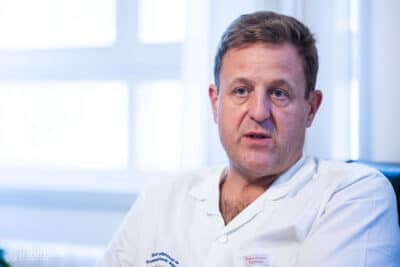 He added that this speed is invisible to the naked eye. The computer-controlled system provides feedback on depth and position at every moment of insertion, while the operator controls the process using a foot pedal. “Thus, the procedure is performed under the control of the surgeon, but with the support of technology,” said Dr. Gábor Polony. Although the use of the robot slightly extends the duration of the surgery – by an average of about 15 minutes per ear – the long-term benefits are clear: Slow and precise insertion reduces damage to the receptor cells and nerve structures of the inner ear, thereby increasing the chance of preserving the remaining natural hearing.
He added that this speed is invisible to the naked eye. The computer-controlled system provides feedback on depth and position at every moment of insertion, while the operator controls the process using a foot pedal. “Thus, the procedure is performed under the control of the surgeon, but with the support of technology,” said Dr. Gábor Polony. Although the use of the robot slightly extends the duration of the surgery – by an average of about 15 minutes per ear – the long-term benefits are clear: Slow and precise insertion reduces damage to the receptor cells and nerve structures of the inner ear, thereby increasing the chance of preserving the remaining natural hearing.
The cochlear implant is made up of two parts: a receiver unit implanted into the skull behind the auricle, with a 12, 16, or 22-channel electrode at the end, which is inserted into the cochlea in the inner ear, replacing the dead (or non-formed) hair cells of the cochlea to deliver electrical signals to the endings of the auditory nerve; and the outer unit containing the directional microphone, which is connected to the implanted unit through the intact skin by a magnet and converts the detected sounds into electrical signals, transmitting them to the inner unit.
The first operation with the new robotic surgery device was performed at the department on a four-year-old child who received implants in both ears. The procedure was successful, and the complex rehabilitation of the little patient has since begun. This surgery was later followed by further successful procedures. According to experts, early surgery is the key to successful speech and hearing development: Ideally, the procedure should be performed at the age of one to one and a half years because this is when the plasticity of the brain’s hearing and speech centers is at its greatest. Delay reduces the chances of regaining speech and natural hearing, so it is extremely important that newborn hearing screening and the subsequent examination are carried out in a timely and accurate manner.
“Robotic technology opens up new horizons not only for children, but also for adults and the elderly,” Dr. László Tamás added. In many cases, hearing loss in old age reaches a level where hearing aids no longer provide adequate speech comprehension. In such situations, a cochlear implant can be a solution, which can be inserted even more gently with the support of robotic surgery. For elderly patients, this means not only regaining their hearing, but also their social relationships, communication, and quality of life, as hearing loss increases isolation, depression, and cognitive decline.
Whether the implant is inserted using a robot or conventional methods is decided based on individualized discussions between specialists and patients, taking into account a variety of factors.
The technology now introduced was developed by one of the leading implant manufacturers, and Semmelweis University’s Department of Otorhinolaryngology, Head and Neck Surgery was among the first in Europe to be able to test it. “The manufacturer is planning multicenter research with several international centers, for which the department will also be able to provide data,” Dr. László Tamás pointed out. This is a great opportunity not only from a scientific but also from a clinical point of view, as long-term data will help assess the extent to which the robotic surgery technique improves hearing preservation and rehabilitation outcomes.
Eszter Keresztes
Translation: Dr. Balázs Csizmadia
Photos by Bálint Barta – Semmelweis University
